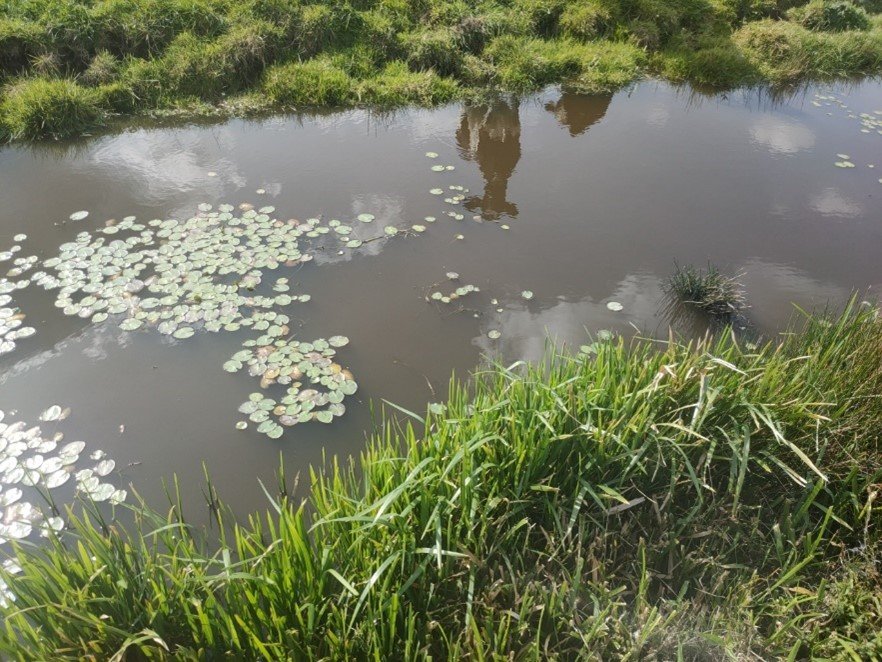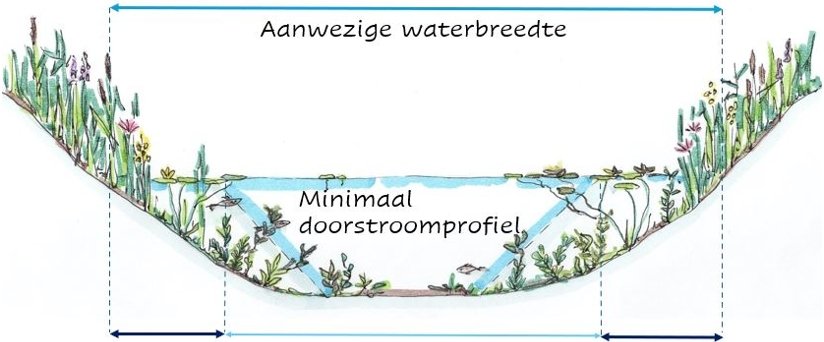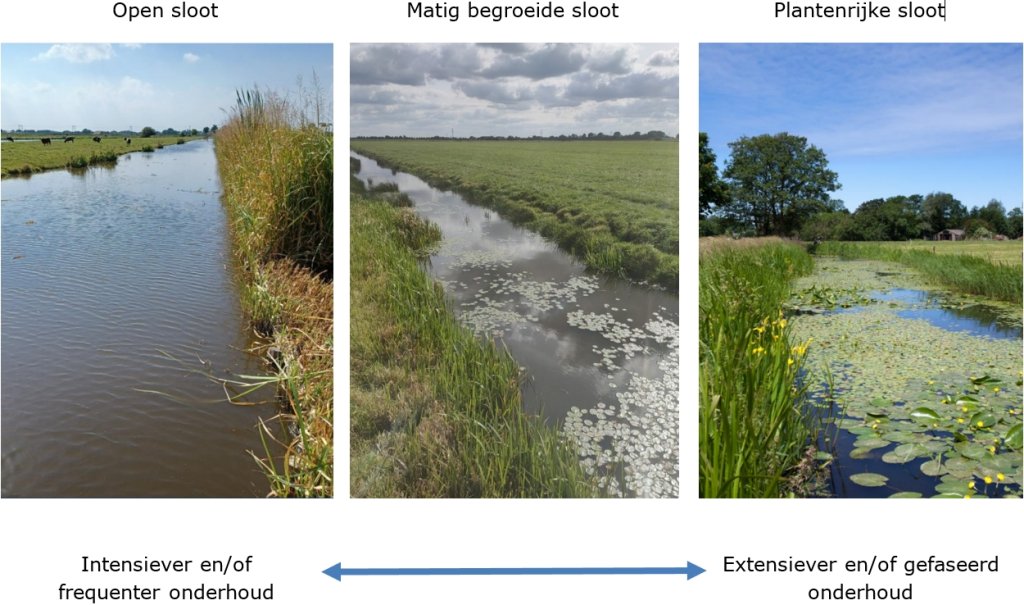Smart mowing for good water management
For the Water Framework Directive (WFD), we are working to improve ecological water quality. An important measure for the WFD is to leave part of the vegetation in place during ditch maintenance, if there is room in the profile. Leaving some of the aquatic plants in place leaves room for aquatic animals and fish to shelter and reproduce. Also, the presence of aquatic plants provides oxygen to the water. This is good for water quality.
By mowing smartly, we ensure good water supply and drainage and contribute to ecological water quality and biodiversity.

How do you know where vegetation can remain?
HHNK is updating the Register map Waters, the digital Map of the water system with the rules about maintenance. For each polder area we will Map bottlenecks and calculate which part of the ditch profile is necessary for good supply and drainage and where there is room for aquatic plants. For the first areas the degree of overgrowth can be found here: Per maximum vegetation level (for perusal).
The analyses show that in many ditches there is room in the profile to leave aquatic plants.

Guidelines for three types of locks
Based on the new analysis, we distinguish three types of ditches with different guidelines for maintenance:
- Open ditches have an important regional function for water supply and drainage. In these ditches a maximum of 25% of the profile may be overgrown with aquatic plants. During maintenance for the inspection a maximum of 10% overgrowth is allowed in the entire watercourse (5% per side).
- In moderately overgrown ditches there is more room for aquatic plants and a maximum of 50% may be overgrown. During maintenance, a maximum of 25% vegetation may remain in the profile in these ditches.
- Planted ditches are especially important locally for water supply and drainage and have a lot of space in the profile for aquatic plants. A maximum of 90% vegetation is allowed here and during maintenance this must be reduced to a maximum of 50%.

If more vegetation is allowed to remain, it is also possible to carry out maintenance in a more phased manner. For example, one year one side of the ditch and the next year the other side. For all types of ditches, the structures (such as culverts, bridges and baffles) must be maintained properly. Also with phased mowing.
HHNK itself is going to work according to the new guidelines where we do the maintenance ourselves. The new maintenance guidelines also apply to farmers and private individuals who are responsible for maintaining ditches, as well as other owners such as Natuurmonumenten, Landschap Noord-Holland and municipalities.
Introduction by area
The careful updating of the register map takes time. Therefore, the new guidelines for ditch maintenance are introduced by area. The current areas can be found in the Register map Watersheds.
New maintenance guidelines for the entire management area (56 areas) will be available by the end of 2026. The goal is for Smart Mowing to be applied within our entire management area in 2027. In this way we work together to improve ecological water quality and biodiversity.